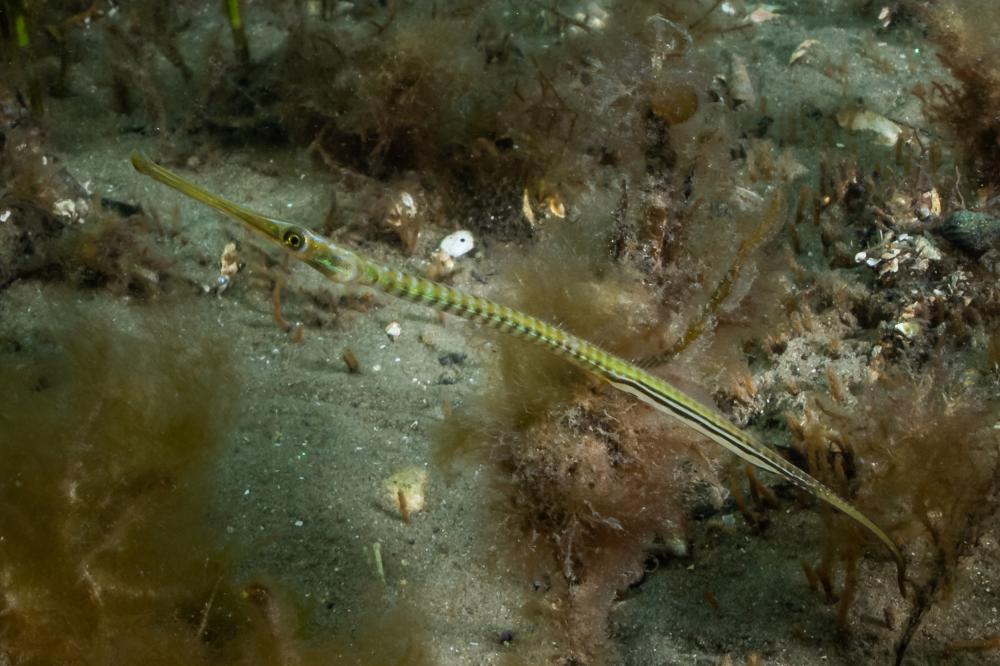Stigmatopora argus
Spotted PipefishSame Genus
Distribution
Temperate Australasia
Description
Relatively straight bodies in the syngnathid family are commonly called pipefishes, a term alluding to a resemblance in shape to pipecleaners. The spotted pipefish and its relative, the wide-bodied pipefish Stigmatopora nigra, are the only two species of pipefish in southern Australia that lack a tail fin. S nigra is easily confused with S argus but differs from that species in having the dorsal fin further forward on the body (originating on the fifth to seventh trunk ring, rather than on the ninth to thirteenth). These two are also the most abundant pipefish species. Although rarely seen because they match eelgrass leaves in shape and colour, large numbers will be captured by hauling a small seine net through virtually any seagrass bed. The spotted pipefish can also be recognised by its olive-green colour and (usually) black spots along the upper surface. Like other pipefishes, the colour becomes most intense in males during the breeding season when they are competing for mates.
Information
Max Size: 25 cm
Sea Temperature Range: 10.9-21.9°C
Depth: 0-8m
Habitat Generalization Index: N/A
Also referred to as the SGI (Species Generalisation Index), this describes the habitat niche breadth of the species. Species with values less than 15 are found in a relatively narrow range of reef habitat types (specialists), while those over 25 may be found on most hard substrates within their range (generalists). Learn more here.
Conservation and Rarity
IUCN Status: Not Evaluated
Occurrence: Infrequent (1.0% of sites)
Occurrence describes how often the species is found on surveys within its distribution. It is calculated as the % of reef sites surveyed by RLS divers across all the ecoregions in which the species has been observed
Abundance: Solitary (1 per transect)
Abundance is calculated as the average number of individuals recorded per RLS transect, where present.
Edit by: Andrew Green













